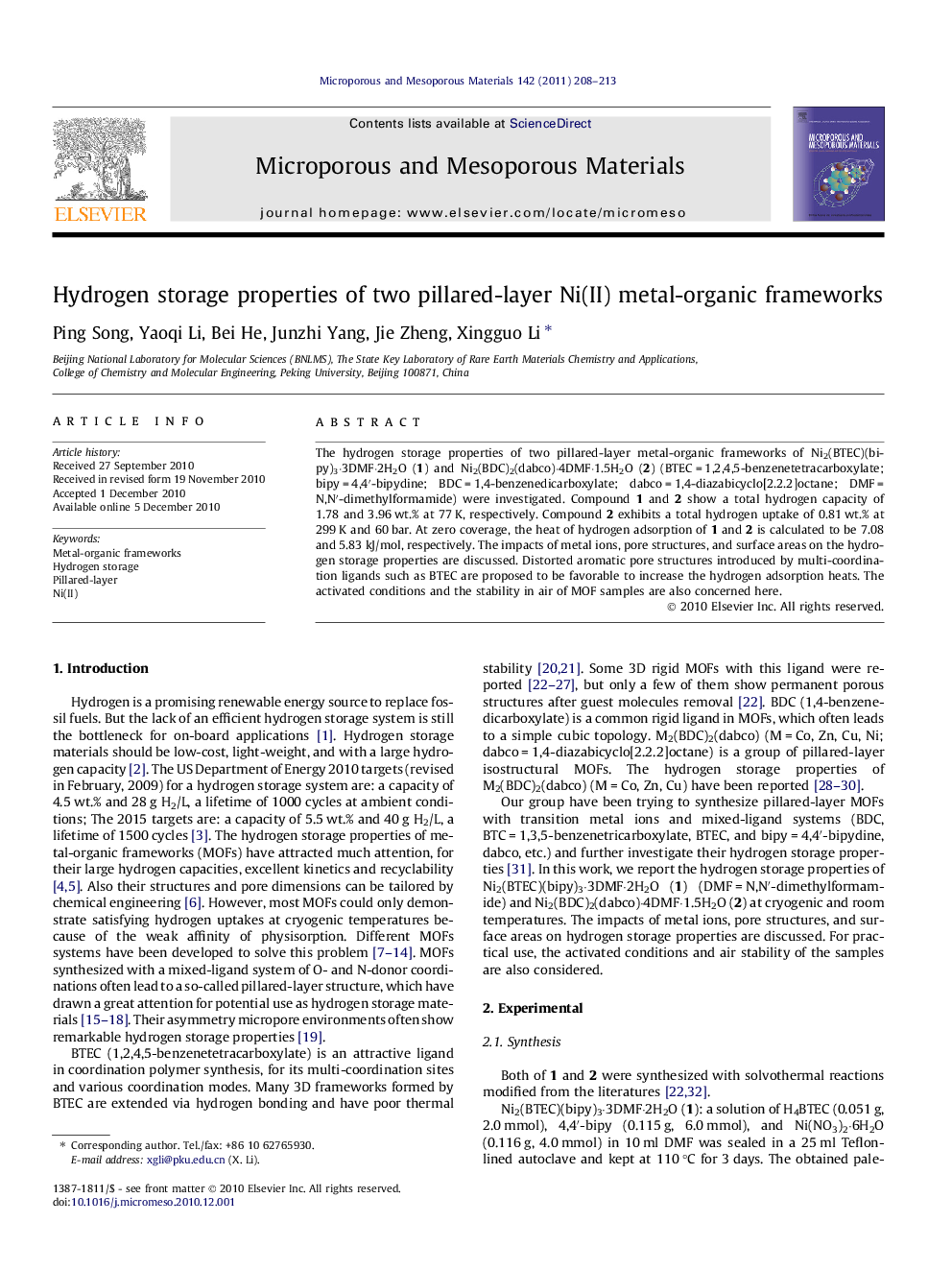| Article ID | Journal | Published Year | Pages | File Type |
|---|---|---|---|---|
| 74638 | Microporous and Mesoporous Materials | 2011 | 6 Pages |
The hydrogen storage properties of two pillared-layer metal-organic frameworks of Ni2(BTEC)(bipy)3·3DMF·2H2O (1) and Ni2(BDC)2(dabco)·4DMF·1.5H2O (2) (BTEC = 1,2,4,5-benzenetetracarboxylate; bipy = 4,4′-bipydine; BDC = 1,4-benzenedicarboxylate; dabco = 1,4-diazabicyclo[2.2.2]octane; DMF = N,N′-dimethylformamide) were investigated. Compound 1 and 2 show a total hydrogen capacity of 1.78 and 3.96 wt.% at 77 K, respectively. Compound 2 exhibits a total hydrogen uptake of 0.81 wt.% at 299 K and 60 bar. At zero coverage, the heat of hydrogen adsorption of 1 and 2 is calculated to be 7.08 and 5.83 kJ/mol, respectively. The impacts of metal ions, pore structures, and surface areas on the hydrogen storage properties are discussed. Distorted aromatic pore structures introduced by multi-coordination ligands such as BTEC are proposed to be favorable to increase the hydrogen adsorption heats. The activated conditions and the stability in air of MOF samples are also concerned here.
Graphical abstractFigure optionsDownload full-size imageDownload as PowerPoint slideResearch highlights► Ni2(BTEC)(bipy)3 and Ni2(BDC)2(dabco) show a total hydrogen capacity of 1.78 and 3.96 wt% at 77 K, respectively. ► Ni2(BDC)2(dabco) exhibits a hydrogen uptake of 0.81 wt% at 299 K and 60 bar. ► At zero coverage, the heat of hydrogen adsorption is calculated to be 7.08 and 5.83 kJ/mol, respectively.
